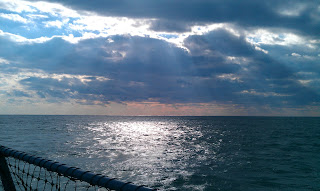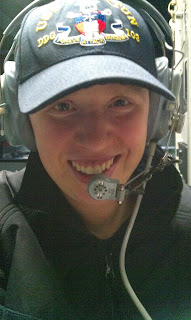Historical
notes from our last three PODs (plan of the day), culminating today, the
anniversary of Truxtun’s last battle:
The
kingdom of France
had been a crucial ally during the American Revolutionary War and had signed a
Treaty of Alliance in 1778 with the United States of America. In the
wake of the 1789 French Revolution, however, relations between the new French Republic
and the United States
became strained. In 1792, France and the rest of Europe went to war and both France and Great
Britain seized ships of neutral powers (including those
of the United States)
that traded with their enemies.
In
1796, the United States
reached an agreement on the matter with Britain (The Jay Treaty) credited
with averting war, resolving issues remaining since the Treaty of Paris of 1783
ended the American Revolution, and facilitating ten years of peaceful trade.
This agreement angered France
and the French Navy consequently stepped up its efforts to interdict American
trade with Britain.
An
American diplomatic commission was sent to France in July 1797 to avert war;
however, the French Foreign Minister demanded bribes and a loan before formal
negotiations could begin. Although such demands were not uncommon in European
diplomacy of the time, the Americans were offended by them, and eventually left
France
without ever engaging in formal negotiations. News of this mistreatment (known
as the "XYZ Affair") prompted Congress to annul the 1778 Treaty of
Alliance on July 7, 1798. Congress also authorized the acquisition of twelve
frigates and two days later authorized attacks on French warships. The
"Quasi-War" with France
had begun.
CONSTELLATION
vs. L'INSURGENTE
The
Quasi-War with France began
in earnest with the United States
sending four naval squadrons to the Caribbean
in late 1798. One of the squadrons under the command of Commodore Thomas
Truxtun in USS Constellation (38 guns) was tasked to patrol for French vessels
between Puerto Rico and Saint Kitts. On 9 Feb
1799, Truxtun sighted the French frigate L'Insurgente (40 guns) off the coast
of Nevis. L'Insurgente attempted to flee,
however, the two vessels ran into a gale and L'Insurgente lost her main
topmast.
With
Constellation approaching fast, the commander of L'Insurgente tried to hail
Truxtun in order to avoid a fight. Truxtun answered with a broadside loaded
with double shot into L'Insurgente's hull. L'Insurgente's answering broadside
only damaged Constellation's fore topmast. Truxtun maneuvered across
L'Insurgente's bow to rake her with a broadside then to the L'Insurgente's
starboard side to fire further broadsides into the French frigate. Three times
Truxtun raked the bows of L'Insurgente before the French captain was forced to
strike his colors and surrender the vessel. L'Insurgente had suffered 29 killed
and 41 wounded to Constellation's five wounded.
Afterwards,
the French insisted that the action was illegal since the two countries were
not technically at war. Truxtun responded, "The French Captain tells me I
have caused a war with France.
If so, I am glad of it, for I detest things done by halves!" President
Adams had been considering sending another diplomatic commission to negotiate
with France,
however, his Secretary of State noted that, "The only negotiation
compatible with our honor or safety is that begun by Truxtun in the capture of
L'Insurgente!" And in reference to the bribes requested by the French to
recognize the last diplomatic commission, a popular toast sprung up to
"Captain Truxtun: our popular Envoy to the French, who was accredited at
the first interview!"
CONSTELLATION
vs. LA VENGENCE
On
1 February 1800, back on patrol in the Caribbean shipping lanes a year after
his capture of the French frigate L'Insurgente, Commodore Truxtun in USS
Constellation (38 guns) again sighted a sail south of the island of Guadeloupe
standing to westward. The unknown ship attempted to flee and Truxtun took up
the pursuit and steadily gained ground over the next twelve hours. Truxtun
passed the order to his gun captains to "not throw away a single charge of
powder and shot, but to take good aim, and fire directly into the Hull of the
enemy... to Encourage the Men, at their Quarters, to cause or suffer no noise
or confusion whatever, but to load and fire as fast as possible, when it could
be done with certain effect."
At
sunset, the unknown ship fired upon Constellation with stern chasers and
Constellation began to bring her batteries to bear, one-by-one, with some of
the shots going clear through the enemy's hull and out the other side. An hour
after midnight, the enemy's fire was completely silenced. Before Truxtun could
come alongside to claim his prize, Constellation's main mast broke off and it
was another hour before the wreckage was cleared, however, there was no longer
any sign of the enemy ship. Constellation had suffered 18 killed and 21
wounded.
Truxtun
assumed that his enemy had sunk. It was nearly two months later that Truxtun
learned his opponent, the French frigate La Vengence (54 guns), had limped to
the Dutch island of Cruacao with nearly 100 casualties out of a crew of 400. La
Vengence had to be grounded to keep from sinking and was out of action for six
months.
For
his actions, Truxtun was awarded a Congressional Gold Medal on March 29, 1800.
The medal depicted Constellation's battle with La Vengence and was inscribed
with the caption: "United States Frigate Constellation of 38 Guns pursues
attacks and Vanquishes the French ship La Vengence of 54 Guns 1 Feb 1800."























